Of Mice and Men: How does Steinbeck Portray Oppression?
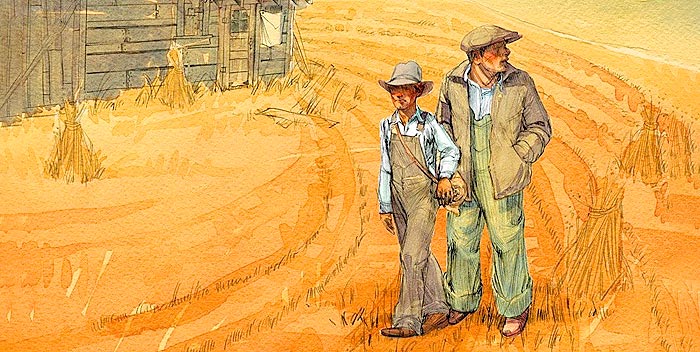
What does unfairness look like? “Of Mice and Men” by John Steinbeck is the story of two migrant workers; an intellectually challenged man and his companion as they travel to a ranch in Soledad, California. The novel follows the story of their challenging experience at the ranch during the great depression in the 1930s. Throughout the novel, John Steinbeck gradually reveals the powerful lesson that life is very unfair and the impact of oppression, through the treatment of Crooks, the death of Candy’s dog and the tragic ending of the story. Steinbeck includes the many examples of unfairness to help the reader understand that injustice, inequality and unfairness is prominent throughout every aspect of society and conveys that this is deeply wrong. The author includes the lesson of the unfairness of life to suggest that it is universal and people of all ages are able to relate to the lesson through personal experience. Despite the reader’s age, everybody is subjected to varying degrees of unfairness in life and Steinbeck presents this idea throughout the novel in different ways.
Racial Minorites
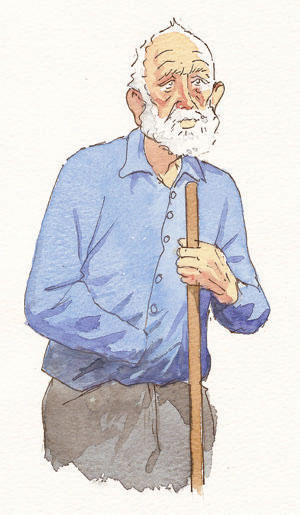
At the beginning of the novel, we are introduced to the other characters at the ranch, including Crooks. Through dialogue, the author gradually develops the lesson that life is unfair. For example, in Chapter 2, Candy shares the story of Christmas where the workers enjoyed the privilege of drinking and partying. As Candy goes on, we sense the unfairness of life as a migrant worker as they perceive having fun as the ultimate privilege. However, this lesson is emphasized when he says,
“they let the n_____ come in that night.”
The author reveals that Crooks is not allowed in the bunkhouse with the other men because he is black and is treated cruelly because of this. Candy who says this thinks Crook’s is smart and likes him, as he describes him as,
“nice fella… he reads a lot..”
However, calls him by derogatory terms rather than his real name. John Steinbeck emphasises the unfair treatment of black people by repeatedly including these racist terms rather than Crook’s real name. The author portrays Candy as a nice character who isn’t inherently racist, however, he puts emphasis on the fact that the characters live in a society where racism is an acceptable part of life. Crooks is aware of how unfair his life is compared to the others as he says,
“I can’t play because I’m black.”
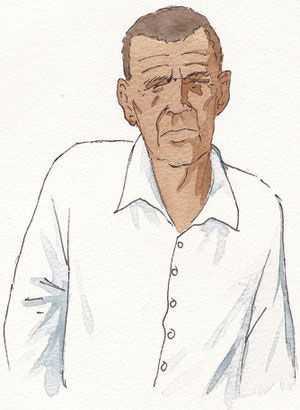
Being black means he has limited opportunities and makes him intensely isolated. Steinbeck conveys that the treatment of Crooks is every wrong and shows how unfair life can be. The author includes this example of unfairness in life to remind us that racial discrimination is present in every society and creates an unfair opportunity to succeed in life. People of all ages are reminded through the cruel treatment of Crooks that life can be unfair but we can restore some equality by changing the way we prejudge others based on race.
The Disabled and Elderly
As the story progresses, John Steinbeck develops the powerful lesson that life is unfair through the example of Candy’s dog. The old dog is described as dirty, useless and old and Carlson offers to shoot the dog as it has no use anymore. The dog worked hard as a sheepdog and companion to Candy but is repaid by being cruelly shot because it has no use anymore. The emotional depiction of the dog being walked out on a leash shows what happens to people who represent the weak in society. For example, Candy says,
“i wishdt someone would shoot me when i ain’t no good anymore,”
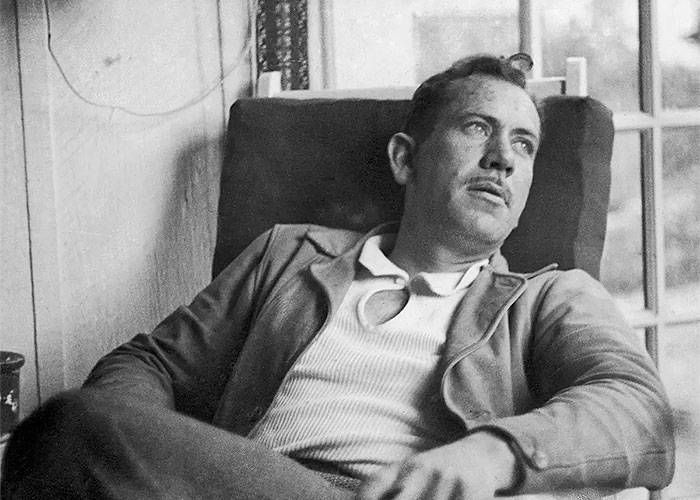
Implying that he would rather die than be useless. The author presents how unfair it was to shoot the dog who wasn’t able to fight back, perhaps suggesting the vulnerable in society who are often taken advantage of or neglected. Steinbeck conveys that it is very selfish to disregard or dispose of the lives of those who are vulnerable or weak after they are of no use to us and reflects on the unfairness of life. Through the example of the dog, John Steinbeck questions the reader on how we treat the vulnerable in society and reminds us to show compassion especially to those who are vulnerable due to age or illness.
Sexism
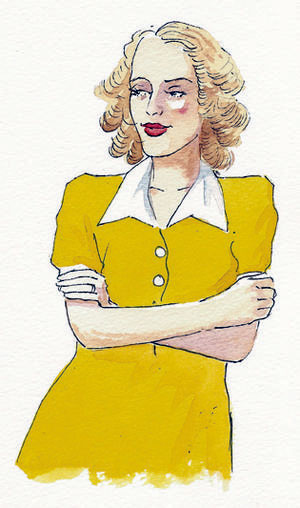
By the end of the novel, the powerful lesson that life is unfair is clear to the reader. John Steinbeck continues to develop this lesson through the tragic endpoint for the characters. The realistic ending where Curley’s wife is killed and as a result, Lennie is also killed relays how unfair life is for some despite working hard. Curley’s wife led a lonely life where she was defined by her marriage and subjected to endless innuendo and never pursued her dream. Steinbeck includes her in the novel to suggest that being a woman during the 1930s at a ranch made life incredibly unfair and miserable. Sadly, Lennie is provoked by Curley’s wife and ends up killing her although he had good intentions. The author includes examples of how Lennie caused trouble despite having good intentions to show the reader how misunderstood his intellectual disability was at the time. The tragic ending shows the consequence and unfairness of the lack of understanding people had towards Lennie’s disability. The author also shows how unfair life can be when you have a disability. For example, Lennie is intellectually challenged, Curley’s wife is impacted because she’s a woman.
Less Wealthy
George is disabled by the economic condition of the US during the depression. The author conveys that being born into unfortunate circumstances makes life even more unfair. Steinbeck shows how common it is for life to be tragically unfair suggesting that people of all races, ages and socioeconomic status experience the unfairness of life at some point.
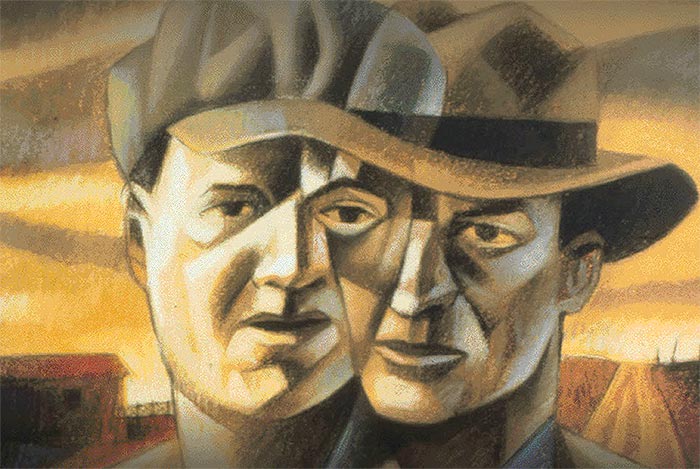
John Steinbeck shows the lesson that life is unfair through many different characters of different age, race and gender to show that it is universal for life to be unfair. Crooks was treated badly and his opportunities were limited because he was black, Candy’s dog was shot because he had no use anymore and as migrant workers, every character worked hard towards their dream of having a better life, but no one achieves this. Through the sad ending, the author is trying to emphasise the powerful lesson that life is very unfair. Steinbeck conveys this lesson through many examples to show the reader that this lesson is relevant to people of all ages and questions the reader on how we could restore some equality in a society so unfair.
What do you think? Leave a comment.











My theatre teacher played slim when i saw the play at one of the local theartres in my town, he in his 50’s and married and it was kinda weird watching this 20 something woman flirt with him, even though he’s as “ageless” and “respected” (to qoute the book) as Slim
I’m French. I read this book during my second year of high school (we have 3 years of high school in France) and it was a pleasure to discover the english literary… In french, Of mice and men is Des souris et des hommes.
Candy’s relationship with his Dog is a more withered version of George and Lennie’s relationship. It also foreshadows George and lennie’s. relationship at the end of the book
A child told me her mum said she was not allowed to read it as it had ‘swear words in it!
I work with vulnerable students, teenage mums and those with a range of anxiety and mental health issues and this book has never failed to engage those students.
We teach it in Year 9 now and they understand both the message of the book and the use of the ‘n’ word in this context. At 13/ 14 they are also being encouraged to think critically in other subjects and I think moving it down a year has worked really well as there are plenty of themes to spark debate. The question I would ask is: how are we all getting on with ‘Jekyll and Hyde’?
I’ve taught OMAM for years-probably 13 times at a count- and I still bloody love it. I have never, ever read it with a group of 14/15 year olds that haven’t loved it. That’s my test- can a novel resonate over and over (again and again) with me and my kids? In this case, absolutely yes! It was one of the saddest days of my teaching career when Govey decided that Steinbeck wasn’t “challenging” enough for the Eton-esque English curriculum.
It’s an amazing thing to share and teach – especially in the last few pages when people begin to realize the tragic echo of the Candy subplot that’s heading their way. You’ll rarely have a room so engaged.
The ending of the book almost made me cry.
I would say that Lennie symbolizes George’s hope for his own ranch. A dream that he keep telling himself over and over again. After Lennie kills the woman, George’s hope runs away to a safe place. However, George has to find it and kill it, before the others, because it is all over. He was so hopeful on the american dream that it got him killed.
That ending hit like a truck.
I haven’t read this book since secondary college so I don’t remember it entirely, but I enjoyed reading your analysis. Might have to revisit the story with your thoughts in mind.
This definitely is consistent with Steinbeck’s themes as shown in The Grapes of Wrath.
If a book can’t make you laugh, or cry, or at least have a nice sitdown with its author — then chuck it.
This was probably one of the only books that every school is forced to read and yet I actually enjoyed.
You like to think candy and George got a farm for themselves, but in the back of your head you know George and candy died broke and on a farm.
George killed Lennie because he knew if Lennie was found by Curley and his posse, what they did to him would be much worse than what George did, in essence, saving Lennie from a crueler fate.
Have to read this for American Lit and I already read the book twice before we started on it in class. I cried a lot and we’re only halfway done in class. Its gonna be so difficult at the end.
I did read it when I was 12. Three things I remember: 1. People find value in close relationships over monetary gain. 2. Common bonds and familiarity steel one during times of trouble. 3. Compassion and forgiveness, though costly, make the world go ’round.
I’m here because I love Of Mice and Men. It’s great literary classic, and one of my favorite books. Thanks for writing about it.
I first read of Mice and Men in school about 35 years ago. I still remember how I felt when I first read different scenes. This story really touched my soul, and I have returned to it a number of times since. Every now and then something will happen in my life and I will remember scenes from the book.
I personally think the book talks about mental illness, using other people for your own personal benefit, and loneliness.
After reading the book, one can appreciate all the details included that were not in the movie. The one that irks me the most is the fact that in the movie, Carlson’s “luger” is a revolver. A luger is a semi – auto pistol that looks like the pistols Nazis use in movies.
I always imagined Lenny as being African American for some reason. Maybe because of the Green Mile movie where the big black guy had the mouse.
If I was George I would tell Curley the problem that happened with the last farm and tell him that it’s her fault
Lenny and George are my favorite literary duo.
This really helped me understand the book better. This book really is a sad one and made me realize a lot more than what I perceived it to be
Good. I remember reading this Steinbeck novel, first in high school and then college and then after college and seeing it in a play several times. Always interesting to read someone’s perspective on this novel.
This writer has capably identified the range of ‘unfairness’ and systemic injustice that Steinbeck underscored in Of Mice and Men. As I researched for Citizen Steinbeck I felt troubled that some school districts shied away from some of the language in the novel and consequently denied students a reading experience that can fine-tune one’s sense of empathy.
I pity lennie and his loneliness.
I always finish reading that final, insensitive line and just say nothing. Once, the class were silent for four minutes. Four minutes that felt like forty. Magic.
This really helped, easier then re-reading the book.
When we read this in school, I quickly realized I was like Lenny. I don’t mind it, but wonder why my parents never told me. “Can I still tend the rabbits, George?”
Lenny was so misunderstood.
If only Lenny knew his own strength, nothing bad would have happened.
Great analysis.
An insightful analysis! I personally hate Of Mice and Men because, as a person with a disability, the ableism grates on my nerves like you wouldn’t believe. But I’m also aware there is no such thing as politically correct history. Knowing that, I can give Steinbeck credit for exploring ableism and other -isms in any way. He can’t be held responsible for embracing values his time period didn’t have, although I think he wrote the book to make people rethink their values. Twenty-first century people who read the book and continue to embrace or ignore ableism, racism, etc. are the ones who can and should be held responsible.
When I read this book at age 14, I remember being intrigued by the emphasis on Crooks’ love of reading. It would have been easy to portray a Black character as somehow anti-intellectual, because a lot of media did and does such a thing; and yet, that isn’t what ends up happening in this story.
I also remember seeing a video essay a long time ago, which suggested that George and Lenny represent two different sides of human beings. By this logic, Lenny is the impulsive “animal instinct” that George finds himself trying to “kill” in order to get on in society.
That would make sense from an intellectual standpoint, because the id, or animal instinct, doesn’t reason or analyze. Lenny’s intellectual disability is so severe, he can’t do either of those things. And as we know, giving in to one’s baser instincts does get you rejected from society on some level (rejected temporarily, rejected from a small group, rejected because you did something immoral or illegal, etc.)
I would add something to that argument, though. Lenny is not a perfect representation of baser animal instincts because he is innocent. He doesn’t know when he does something wrong, nor can he fully comprehend it when he’s told he transgressed. Therefore, I’d argue George is trying to kill not only his animal instincts, but his innocence. The killing of innocence is arguably necessary; it’s in every coming of age, buildingsroman, or other novel American students are presented with in English class. But in Lenny’s case, the killing of innocence has deeper implications and consequences because Lenny is an already-marginalized human being.
The analysis is sound, though perhaps more exposition to contextualize the setting would add additional flavor. The Great Depression followed the Roaring Twenties, unfathomable famine cutting short an age of opulence and wealth, creating the harsh world under which all human beings suffered back then. The literary work is important, yes, but because it is historical fiction we the audience need to both contextualize the message as it happened then in order to understand and apply it now.
A book which I read more than once and you present a good perspective on it. Enjoyable to read.
Great piece! I think of lot of things went over my head when I first read this in high school. A re-read may be long overdue..
Loved the analysis. Steinbeck heartbreaking novel manifests the cruel reality of oppression that the marginalized subalterns have to face in any and every society.
Simpleminded interpretation.
Wonderful article, full of many ingenious explanations.
Steinbeck’s entire work revolves around oppression and economical distress. Although I agree that he portrays life as unfair, George did help Lennie (the job, the puppies, the company and support, etc.) and showed how it is possible to make other people’s lives a little bit better, which in return, makes your own life a little better, too.
I remember in high school they had us read this and I’m not sure if I liked it then and not sure if I would revisit it now.
great analysis!